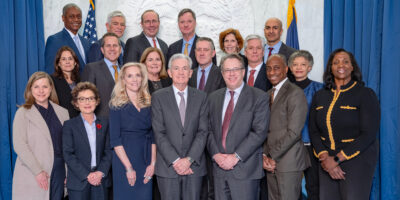The Greedflation Myth
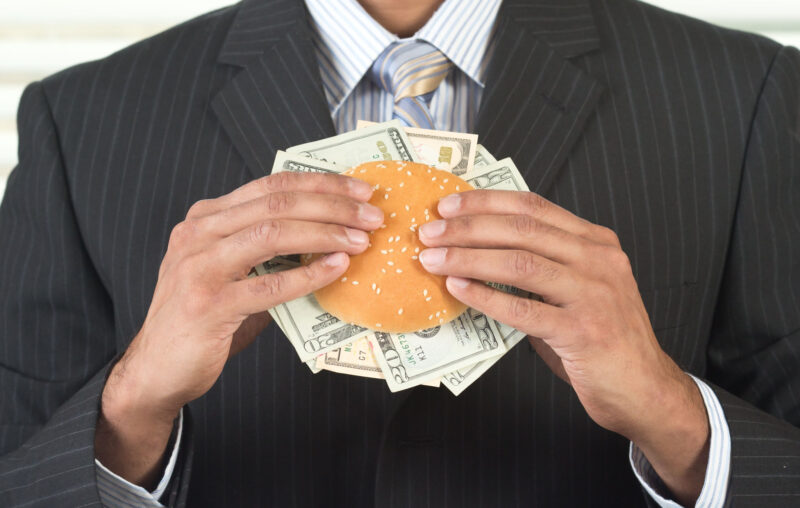
Politicians on the left were quick to blame greedy corporations for rising prices. “Corporations have figured out they can use inflation as cover to not only pass along their own increased costs to consumers, but also to price gouge to boost their profit margins,” Sen. Elizabeth Warren (D-MA) tweeted last year. President Biden echoed her sentiment shortly after. More recently, Sen. Sherrod Brown (D-OH) condemned “corporate executives who pretend they’re making ‘tough choices’ about prices while reporting record profit increases quarter after quarter and doing more and more stock buybacks.”
Now, the politicians are getting support from some academics.
In a recent National Bureau of Economic Research Working Paper, Guido Lorenzoni and Iván Werning argue “that the most proximate and general cause of inflation is conflict or disagreement.” They continue:
In this view, inflation results from incompatible goals over relative prices, with conflicting economic agents each having only partial or intermittent control over. Due to nominal rigidities, agents occasionally change a subset of prices that are under their control. Whenever they do, they adjust them to influence relative prices in their own desired direction. When coupled with staggered prices this conflict manifests itself in a finite level of inflation: the conflict over relative prices are largely frustrated. Despite a stalemate in relative prices, the changes in prices motivated by this conflict gives rise to general and sustained inflation in all prices.
Greed prompts each party to raise prices whenever they get the chance, so the price level rises over time.
According to Lorenzoni and Werning, “Conflict should be viewed as the proximate cause of inflation, fed by other root causes.” In a new UMass-Amherst Department of Economics Working Paper, Isabella M. Weber and Evan Wasner point to sector-wide cost shocks and supply bottlenecks as a root cause:
We argue that firms with market power typically refrain from lowering prices and raise prices only if they expect other firms to do the same. Besides a formal cartel and norms of price leadership, there can be implicit agreements that coordinate price hikes. Sector-wide cost increases can generate such an implicit agreement: since all firms want to protect their profit margins and know that the other firms pursue the same goal they can increase prices, relying on other firms following suit. If firms deviate from this price hike strategy, the threat of share sell-offs by financial investors can enforce compliance with such implicit agreements. Bottlenecks can create temporary monopoly power which can even render it safe to hike prices not only to protect but to increase profits.
When input costs rise, greedy corporations collude to raise prices even more than is justified by the initial shock.
There is no denying that the greedflation story is politically convenient. But it is inconsistent with standard price theory and historical experience.
Let’s start with price theory. As Joshua Hendrickson explains:
Firms with market power get to set their own price. However, since they face a downward-sloping demand for their product, they cannot just set the price at whatever level they want. Their choice of the price will determine the quantity demanded for the product. One way to think about these firms is that they set their price, taking the demand curve as given, to maximize their profit.
Maximizing profits requires a firm with market power to set its price at the point where marginal revenue is equal to marginal cost.
To illustrate, Hendrickson presents the following figure, which should be familiar to microeconomics students. Diminishing marginal utility implies that the demand curve (D) is downward sloping. Specifically, let P = a – bQ, where a>0 and b>0. Marginal revenue, which is the change in revenue that results when a firm sells an additional unit of output, is given by the equation MR = a – 2bQ. Marginal cost (MC = c) is assumed to be constant for ease of exposition.
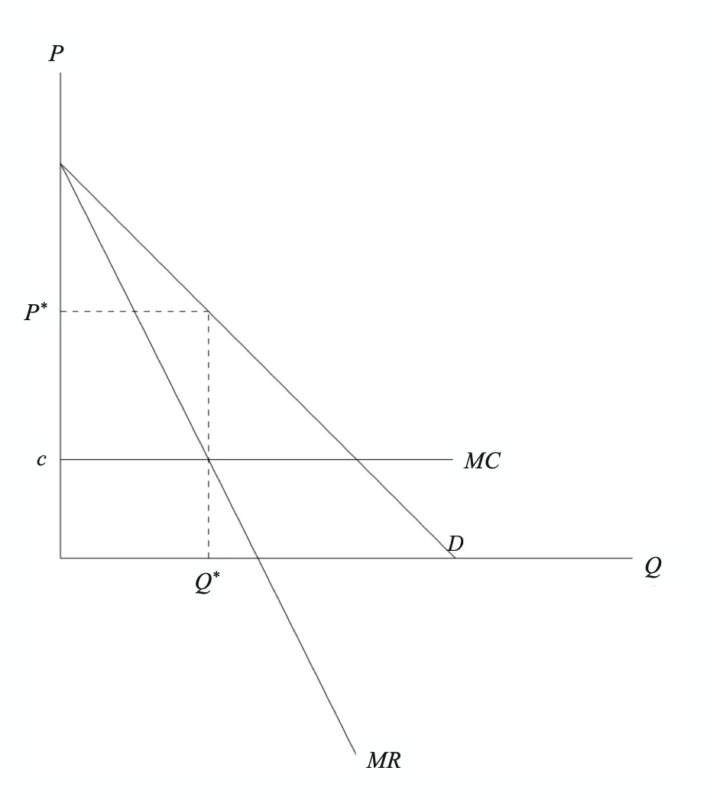
Figure 1. Price-setting behavior of a profit-maximizing firm with market power
A profit-maximizing firm with market power sets its price at P*, where MR = MC, and produces Q* output. Total revenue is given by the area P*Q*. Total cost is given by the area cQ*. Hence, profit is P*Q* – cQ* = (P* – c)Q*, where (P* – c) is the profit margin.
Next, consider the effect of an increase in input costs. With higher marginal costs, a profit-maximizing firm with market power will raise its price and reduce its output. The result is depicted in Figure 2.
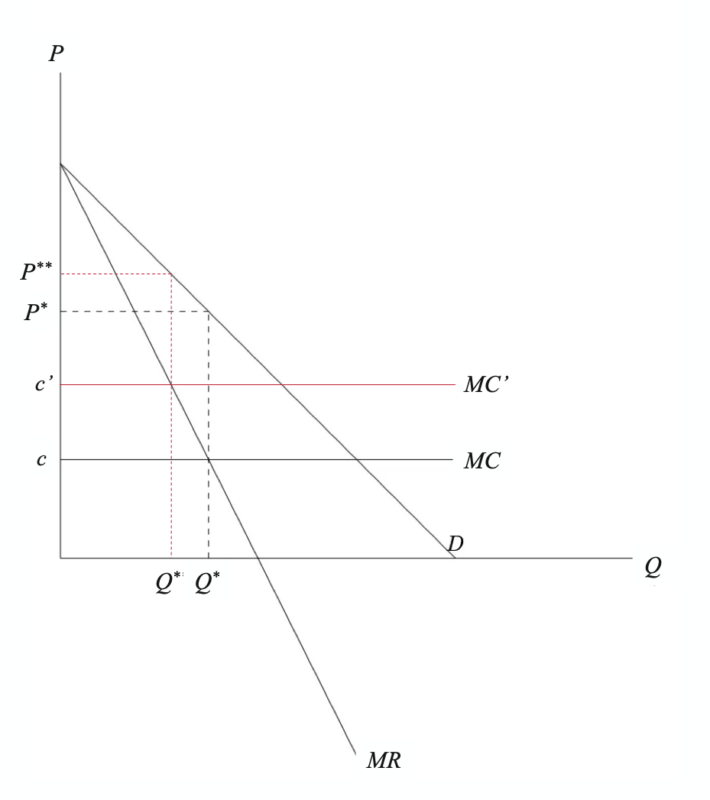
Figure 2. Price-setting behavior of a profit-maximizing firm with market power facing higher input costs
Note that, although a profit-maximizing firm with market power passes on some of the increase in input costs, it is not able to pass on the full increase in input costs—let alone more than the full increase: (P** – P*) < (c’ – c). Since the firm faces a downward-sloping demand curve, passing on the full increase in input costs would require setting the price at a point where MR > MC, which is not consistent with profit-maximizing behavior.
Price theory shows that an increase in input costs will reduce profit margins. In Figure 2, profit margins decline from (P* – c) to (P** – c’). Moreover, since Q** < Q*, we can definitively state that the profit maximizing firm with market power realizes lower profits following the increase in input costs.
How, then, might one account for the rise in prices and corporate profits experienced over the last two years? Price theory offers three potential explanations:
- Firms weren’t maximizing profits prior to the increase in costs;
- Firms aren’t maximizing profits after the increase in costs; or,
- Firms have also experienced a sufficiently large increase in demand.
If firms are greedy, as politicians on the left insist, it must be the latter.
Of course, we know that firms have experienced a huge increase in demand over the last two years. The government made huge transfers to households and businesses, which was accommodated by the Federal Reserve. As a result, nominal spending surged.
Understanding what really pushed prices higher over the last two years—more money chasing fewer goods—also suggests another way to test the greedflation view: considering inflation in monetary regimes that constrain the growth rate of money.
On the gold standard, for example, miners generally ensured that the money supply grew in line with money demand—no more, no less. The result was a relatively stable purchasing power—at least over long periods of time—and, hence, a relatively stable price level. As Rafael Guthmann points out on Twitter, the gold standard experience creates a big problem for the greedflation view.
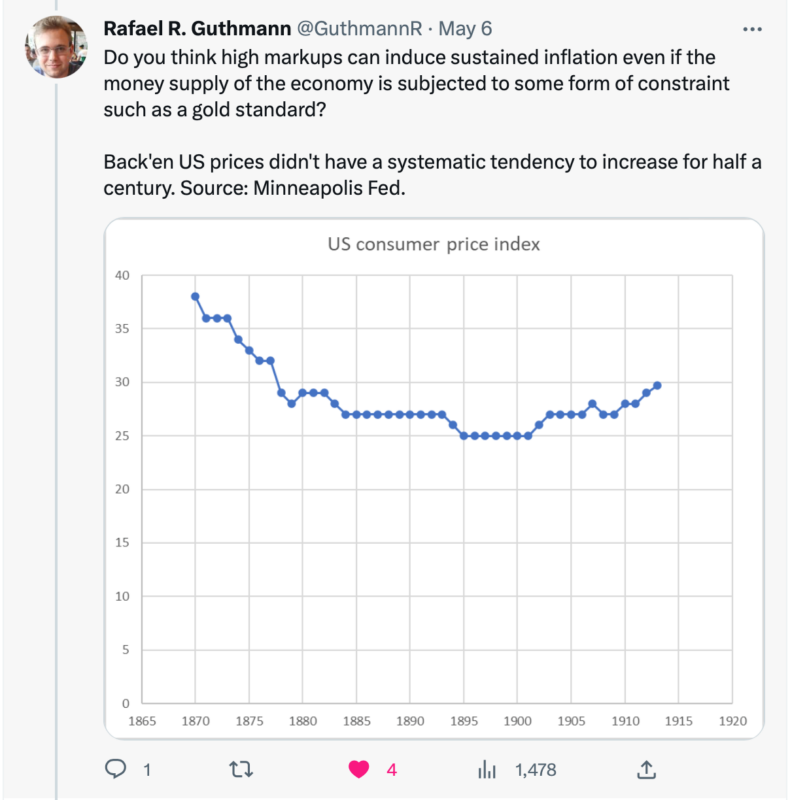
Are we to believe there were no “sector-wide cost shocks and supply bottlenecks” while we were on the gold standard? No other root causes of conflict? Or, perhaps people only became greedy after the gold standard was abandoned. Such explanations seem implausible.
Milton Friedman was right. “Inflation is always and everywhere,” he wrote, “a monetary phenomenon, in the sense that it is and can be produced only by a more rapid increase in the quantity of money than in output.” Politicians on the left would like us to believe inflation is caused by greedy corporations. And some academics are all too happy to provide them with theoretical cover. But the theories on offer are inconsistent with standard price theory and historical experience. Higher corporate profits didn’t drive prices higher. Rather, loose monetary policy pushed prices and profits up.


